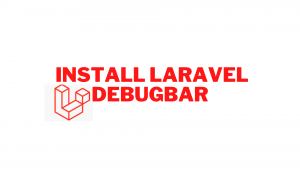You are need to integration payment gateway in many Laravel application and many developer guess is to hard but it is very easy and simple. here we are help to you how to integrate payment gateway in your laravel application with paypal. so, laravelcode show you how to integrate paypal with laravel. We are use not use any package for integrate paypal with laravel. You may also like Paypal Payment using PHP and Shopping Cart using Laravel 8.
Steps For How to integrate Paypal payment gateway using Laravel 8
Step 1. Create route
We are required three route for show paypal payment form view and one another is for make post HTTP request and third for check our payment return status response is true or false like this way.
Route::get('checkout', [
'as' => 'checkout',
'uses' => 'CheckoutController@checkout'
]);
Route::get('response', [
'as' => 'response',
'uses' => 'CheckoutController@response'
]);
Route::get('cancel', [
'as' => 'cancel',
'uses' => 'CheckoutController@cancel'
]);
Route::post('submit', [
'as' => 'submit',
'uses' => 'CheckoutController@submit'
]);Step 2. Create CheckoutController
In this step we have create view.
public function checkout()
{
return view('cart.checkout');
}In above checkout page to display order detail and cart item detail after you are press the submit button in checkout page go to submit function i have already defined above route.
Step 3. CheckoutController with submit function
public function submit(Request $request)
{
$order_id = DB::table('tbl_order')->insertGetId(
[
'firstname' => $request->get('firstname'),
'lastname' => $request->get('lastname'),
'email' => $request->get('email'),
'total_payment' => Cart::total(),
'total_tax' => Cart::tax(),
'created_at' => date('Y-m-d H:i:s'),
'updated_at' => date('Y-m-d H:i:s'),
'paymentdone' => '0'
]
);
foreach(Cart::content() as $row)
{
$submit = DB::table('tbl_item')->insertGetId(
[
'order_id' => $order_id,
'product_id' => $row->id,
'amount' => $row->price,
'qty' => $row->qty,
'created_at' => date('Y-m-d H:i:s'),
'updated_at' => date('Y-m-d H:i:s'),
]
);
}
$paypalId = '';
$query = array();
$query['business'] = $paypalId;
$query['cmd'] = '_xclick';
$query['item_name'] = 'Project';
$query['no_shipping'] = '1';
$query['item_number'] = $order_id;
$query['amount'] = Cart::total();
$query['currency_code'] = 'USD';
$query['cancel_return'] = 'http://example.com/cancel';
$query['return'] = 'http://example.com/response';
$query_string = http_build_query($query);
header('Location: https://www.sandbox.paypal.com/cgi-bin/webscr?' . $query_string);
exit();
}Step 4. CheckoutController with response function
public function response(Request $request)
{
if(!empty($request->get('item_number')))
{
$item_number = $request->get('item_number');
$status = $request->get('st');
if($status == 'Completed')
{
$getdetail = DB::table('tbl_order')
->where('id','=',$item_number)
->select('*')
->first();
if(count($getdetail) > 0)
{
$query_update = DB::table('tbl_order')
->where('id', $item_number)
->update([
'paymentdone' => '1',
]);
Cart::destroy();
return redirect('checkout')->with('success','Thank you! Your order successfully placed.');
}
else
{
return redirect('checkout')->with('error','Due to some error please try again.');
}
}
else
{
return redirect('checkout')->with('error','Due to some error please try again.');
}
}
else
{
return redirect('checkout')->with('error','Due to some error please try again.');
}
}Step 5. CheckoutController with cancel function
public function cancel()
{
return redirect('checkout')->with('error','Your payment is cancel please try again.');
}And if you like this tutorials please share it with your friends via Email or Social Media.


